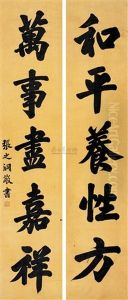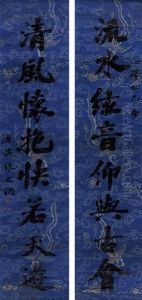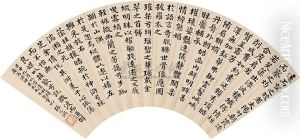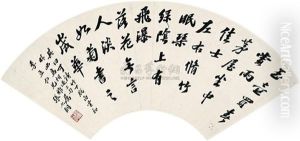Zhang Zhidong Paintings
Zhang Zhidong was not an artist but a prominent Chinese politician and reformer during the late Qing dynasty. Born on September 4, 1837, in Hanyang, which is today part of Wuhan, Hubei Province, he played a significant role in the attempts to modernize China and resist foreign influence during a tumultuous period of the country's history. Educated in the Confucian classics, he passed the highest level of the imperial civil service examinations in 1863, which launched his official career.
Zhang Zhidong held various government positions, rising through the ranks to become the Viceroy of Huguang and later the Viceroy of Liangguang, where he was responsible for the provinces of Guangdong and Guangxi. He is perhaps most famous for his balanced approach to reform, encapsulated in his catchphrase 'Chinese learning for the essence, Western learning for the practical use,' which advocated for the adoption of Western technology and military reforms while maintaining Confucian principles and governance.
Throughout his career, Zhang advocated for and implemented a number of reforms, including educational reforms, the establishment of modern factories and arsenals, and the development of a modern military. His efforts to balance between upholding traditional Chinese values and institutions and adopting Western innovations were emblematic of the Self-Strengthening Movement, a period of institutional reforms initiated in China following the Opium Wars.
Zhang Zhidong's writings, particularly his work 'Quanxue Pian' (Exhortation to Learning), were influential in promoting the idea that China could borrow from Western advancements while keeping its own cultural identity intact. Despite his efforts, the Qing dynasty faced increasing internal and external pressures, leading to the eventual Xinhai Revolution in 1911.
Zhang Zhidong died on October 5, 1909, before the fall of the Qing dynasty. His legacy is complex, as he is seen both as a champion of modernization and as a staunch defender of the traditional order. His life and work reflect the challenges China faced in a period where it was confronting the need for transformation while grappling with the desire to maintain its cultural and political sovereignty.





